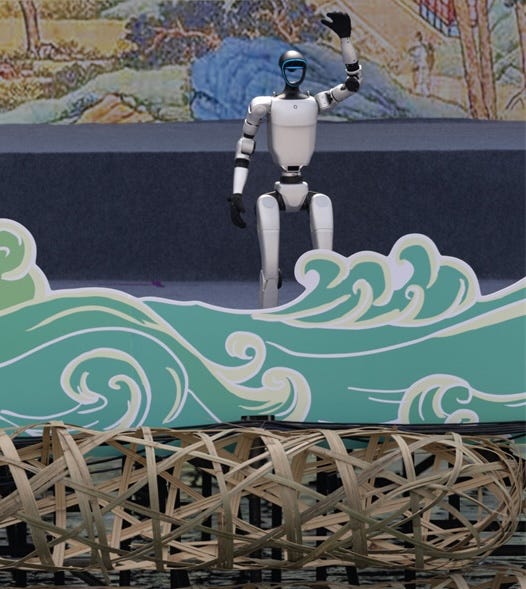Robot Invaders Are Coming For Your Sichuan Food
What could be spicer than the "industrial production" of Sichuan cuisine?
I was initially intrigued and impressed by the May 1 Xinhua News article “China's local cuisine law spices up global dining tables.”
There were some savory stats:
“Data shows that Sichuan cuisine accounts for 30 percent of the 700,000 Chinese restaurants overseas, captivating diners worldwide.”
“Sichuan cuisine leads China's culinary scene, with over 320,000 restaurants offering Sichuan flavor including hot pots, covering 92.2 percent of Chinese cities. In Sichuan alone, the food service industry led by its iconic Sichuan cuisine rose 6.9 percent to 384.6 billion yuan in 2024, contributing 22.6 percent to the province's retail sales growth.”
That’s a lot of mapo.
And then there was this: a new law that, “consisting of 29 articles, addresses critical industry challenges, such as interdepartmental coordination for better development, industry chain improvement, talent training and skill preservation, and the promotion of culinary culture.”
At The Cleaver and the Butterfly we always support the promotion of culinary culture. But as I read more deeply into the article, my admiration started to turn sour. What did all this stuff about “new technologies” and “sci-tech programs” to support “culinary innovation” mean?
Chengdu Catering Company, which owns the renowned Sichuan cuisine restaurant Rongle Garden, is currently cooperating with a hi-tech company to develop a cooking robot that prepares classic Sichuan dishes.
Luo Yanzi, the company's business planning manager, said dishes like Kung Pao Chicken will be cooked with 85 percent authenticity.
"Using robots doesn't contradict preserving intangible cultural heritage. If only the authentic flavor remains, it's still Sichuan cuisine," said Luo.Li Xiang, dean of the College of Culinary and Food Science Engineering, STU, said the college is collaborating with robotics firms to develop smart cooking facilities. Researchers are analyzing Sichuan cuisine's 24 flavors at the molecular level to create standardized formulations for industrial production without losing authentic taste.
"The scientific approach combining cutting-edge technology with culinary tradition will help advance the industrial production of Sichuan cuisine," Li said.
The industrial production of Sichuan cuisine. 85 percent authentic!
Now, I don’t want to come off as a complete Neo-Luddite here. Of late I’ve been reading a lot about the intersection of Daoism and Chinese alchemy, a millennia-old joint venture that was hugely influential on the course of Chinese scientific development and may have been instrumental in the invention of such great world treasures as tofu. And I would have to concede that every time I use my Cuisinart or KitchenAid or electric lime-squeezer I am at least part-cyborg.
But where’s the fun or art or joyful serendipity in industrially produced/85 percent authentic Kong Pao chicken? This is how not how you bolster a cuisine; this is how you destroy it.
P.S. The photograph of the robot above was one of a series of photos taken at this year’s Dujiangyan water-releasing festival in Sichuan in April, an annual event celebrating the 2500-year-old irrigation system that helped establish Sichuan as “the land of plenty.” So, yes, technology, at least in the form of elaborate water-diversion infrastructure, has been part of the Sichuan food story to begin with.
But I still think the robot looks stupid.



The future of Sichuan cuisine sounds unappetising! The government seems like it wants to not only industrialise it but nationalise it as well. There are some interesting figures in that Global Times story too.